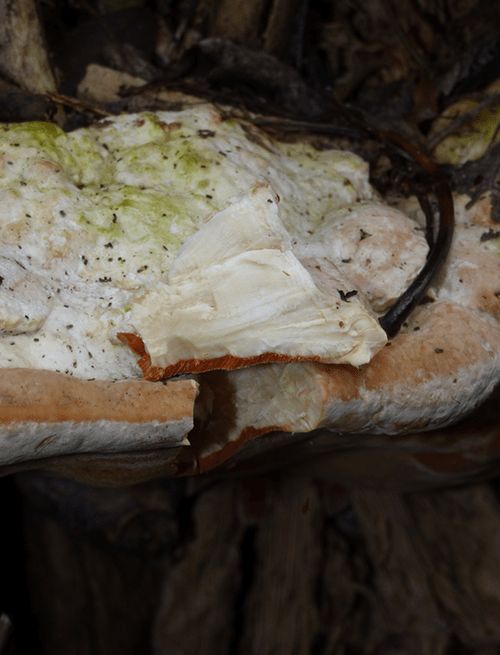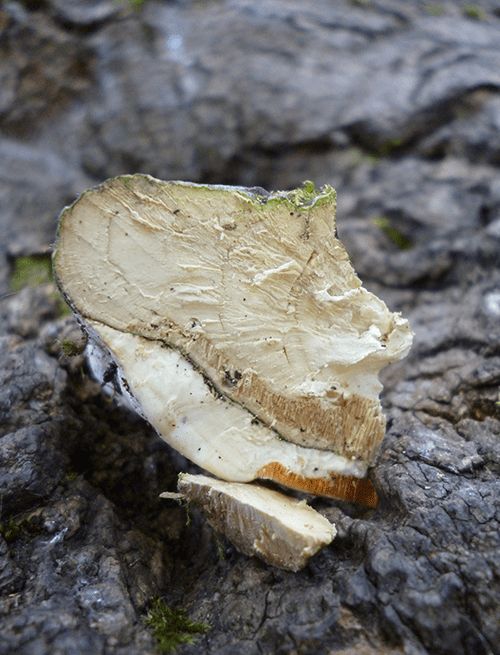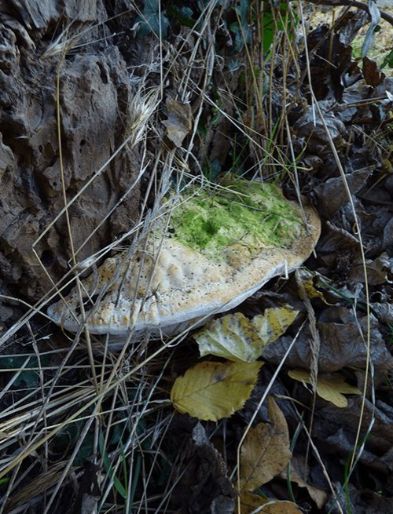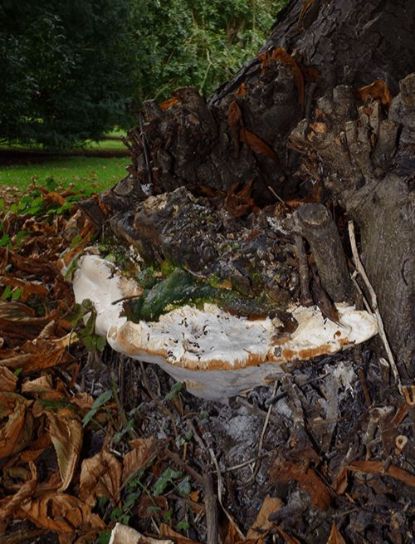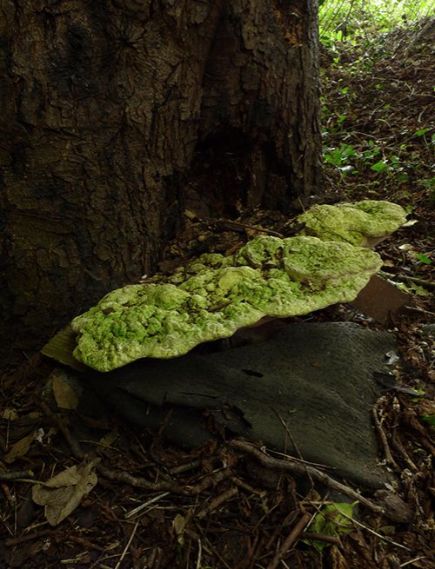Rigidoporus ulmarius
(Sowerby) Imazeki
Common name
Giant elm bracket.
Often found on
Beech, horse chestnut, poplar.
Sometimes found on
Elderberry, elm, lime, maple, plane, sycamore.
Location
Found at the base of the tree and along the main stem – when found up the stem, it often emerges from pruning wounds or storm-damaged regions where limbs have been lost. Can be found growing within hollows quite routinely.
Description
Perennial. Tough and woody. Begins as a white mass. Develops into a bracket with a beige-white upper surface that routinely becomes algal-stained and mossy. Pore layer off-white. Spore white. Flesh strikingly white. Shallow tube layer cinnamon-orange. Can become very large.
Confused with
Oxyporus populinus (deep tube layers); Perenniporia fraxinea (flesh is not white).
Significance
Attributed to a brown rot of the (false) heartwood. Reaction growth therefore not induced (wood retains its rigidity). Potentially weakly pathogenic though research is lacking. When fruiting from a pruning wound or area that has been storm-damaged, decay may be localised. For trees where targets exist, investigations into hollowness may be required. Where decay is suspected to be below-ground, stability investigations may be needed.
 Imazeki AP.jpg)
 Imazeki B.jpg)
 Imazeki C.jpg)
 Imazeki D.jpg)
 Imazeki E.jpg)
